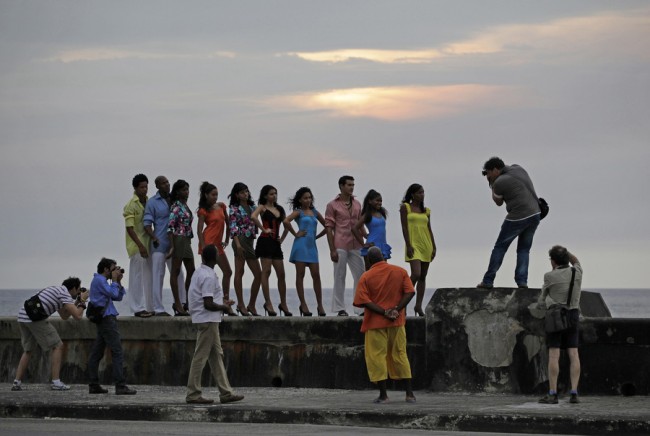
In Cuba there are two types of citizens. Those who can enter the elegant boutiques and buy brand-name clothing and those who have to content themselves with pressing their noses against the window panes.
In many cities of the world, December is the month for reductions. In Havana it’s not. In 2010, in a circular to the managers of the hard-currency stores, the articles to be discounted are enumerated for the year-end.
It’s not a cause for fireworks, but it’s something. Waiting for this day, Yuliet, 25 years old, a hotel employee, goes to the Comodoro complex of shops, located in the west of Havana, to look at the price of a pair of dresses with the Mango label.
“If I don’t find what I’m looking for, I’ll go to Zara, to see what they are selling,” she says while she checks the merchandise, all very expensive.
The prices are abusive. A pair of good tennis shoes for a little girl can easily cost 50 dollars. And if they are Adidas, Nike, Puma, Levi’s or Guess, they can be close to or more than 100 dollars.
Obispo Street, in old Havana, is full of hard-currency shops. Román, 43 years old, a teacher, shakes his head when he sees the prices in a leather store.
“This is the last straw. I need a pair of shoes to be a witness at a friend’s wedding, and I have only 40 dollars. I’ve spent 7 hours going to all the shops. I liked the ones made of Italian leather, but they cost 120 dollars,” he said, disillusioned.
To buy something good in Cuba is a mission impossible. Nothing is cheap when you have to pay in a type of money that you don’t receive when you get paid (the average salary on the island is 12 dollars per month).
In addition to clothing and shoes, in order to buy certain articles of food and cleaning products, you have to pay in Cuban convertible pesos or CUCs, the Cuban hard currency.
And everyone knows that hard currency comes from the USA, the “enemy” territory of Fidel Castro. Also from Europe and Latin America. There are Cubans sprinkled in half the world.
Although dollars and euros are a rare commodity for 40 percent of Cubans who don’t have access to hard currency, the prices for clothing and shoes have gone up by 30 percent in the last five years.
Add to this that the Castro government taxes hard currency between 12 and 18 percent, a casino for the State. Without counting investments, this “revolutionary tax” (instituted by Castro in October 2004), brings in about 600 million dollars annually.
This isn’t the only one. There’s a tax on products in the “shoppings,” the hard-currency stores, that sometimes exceeds 240 percent. This doesn’t prevent artists, intellectuals, musicians and high-class prostitutes from buying brand-name clothing and shoes without looking at the prices. They don’t even blink when it comes time to pay.
They are in the minority. The majority have to write down the telephone number of their families in Miami, Madrid or Rome. Or risk their hides in some black-market negotiation that will give them a good profit.
Since 1959, Cubans have had the custom of wearing something brand new to welcome in the new year. During this time, the shops make money, in spite of the questionable quality of what they offer. And the fact that Havana is as expensive as New York.
Photo: Fashion show on the Malecón of Havana.
Translated by Regina Anavy
December 30 2010
